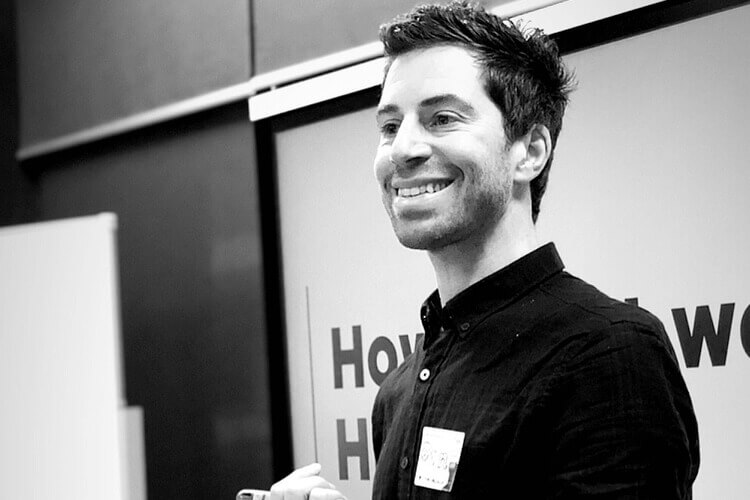Recently I attended a really great conference in Adelaide called LAST (Lean Agile Systems Thinking). I spoke with the two founders from Melbourne, Craig Brown and Ed Wong afterwards – they are both longtime Agile practitioners, one of them a project manager and the other DevOps. Five years ago they got fed up with the lack of community around Agile practices in Australia so they hired a room at Swinburne Uni for the day, got together all the people they knew and without any agenda, kicked off what has now become a nationwide event. I love hearing stories of people like this – people who have the passion, the guts and the drive to make something happen.
There was a lot to unpack from the day and thought I would share my top takeaways. It was a mix of keynotes and highly interactive workshops. It’s been ages since I have been thrown into a workshop with total strangers and had to problem solve and work together as a team – it was really refreshing!
In no particular order:
1. We rely on technology too much.
A driving principle of Scrum, design thinking and other agile practices is ‘simple is best’. That means that most Agile workshops are run without any digital technology. All you need is a team, pens, paper and sticky notes. Removing the ‘laptop crutch’ and problem-solving with a sharpie allows the ideas to flow more freely (and the liberating task of scrunching up a failed concept – thanks to Dan from More Space For Light for letting us scrunch up a lot!). While we need project management tools to allow our team to function across the office (and the globe), more often we should start by sitting around a table as a group with simple tools.
2. Visual Reminders
Off the back of this, the second takeaway was keeping ‘visual reminders’ of both progress and roadmaps up on the walls around us. It is something we used to do more of in the office (using whiteboards, sticky notes etc) but we have now gone totally digital. Kelly Reis (Lead Agile coach at My Budget) stressed the importance of having a clear and transparent visual roadmaps of all projects – it should be something that any team member can look up to and see our progress and how far we have come. Something to think about – I’m happy to hear your ideas.
3. Agility
Agile is a state of mind, not a framework or a series of buzzwords. Most of the attendees were from big organisations (government, health, banking, energy) who have all been through ‘Agile’ transformations. A common thread is that the jargon gets thrown around and a few ceremonies will get instated (eg. daily standups) but no real change is impacted. An agile team is a ‘self-empowered’ team that does not rely on any hierarchy to drive them or to dictate tasks. To become agile requires a radical shift in mentality across the entire organisation (as well as stakeholders). Pete Holliday gave a great example of the scale that this can be achieved at, by referencing this book. It describes how the US Military radically changed their hierarchy and structure during the war in Afghanistan (sounds like a very interesting book).
If you have never read the Agile Manifesto before – you can find it here.

Dan Levy – More Space For Light
4. Learning from failures
We need to face and embrace our fears more. Too often we hide in our shells and behind the structure and strength of others. Truly remarkable organisations are made up of teams that feel safe, empowered and have the courage to fail (and learn from those failures). It is impossible to innovate without sticking your neck out! When was the last time you did something that scared you? I would love to know!
5. Feedback loop
The feedback loop is everything. All of these Agile practices are built on the foundation of a ‘learn and inspect’ cycle. That means: set a period of time and a goal, thrash about trying to solve it, and then stop and LEARN from the exercise. Retrospectives and the feedback loop within sprints (with both clients and internally) are the most critical elements of improving as a team. If we don’t know where we went wrong or did well – how can we do better next time? We all know the (very cliche) definition of insanity is “trying the same thing over and over and expecting a different result”. Agile workflow is the antithesis to this. If we are repeating mistakes it shows that we are not stopping to consciously ponder on our learnings. Either that or there are bigger issues at hand.
6. Face-to-face
Less of a takeaway but as an aside, I was speaking to one of the partners of Innodev (a large consultancy out of Melbourne) where they have banned internal email and started using Marco Polo. This has now totally overtaken Slack as a communication tool for them. They believe the power of face-to-face has resulted in drastic improvements in the efficiency of their communication. The software looks cool, it keeps a record of every chat and also dictates the speech which is searchable. I am keen to have a play.
I am looking forward to the next event which is taking place in Melbourne on the 30th July – we will be there looking to learn more about Agile systems and how we can better apply them to our own processes.
You can find the detail of the event here.


